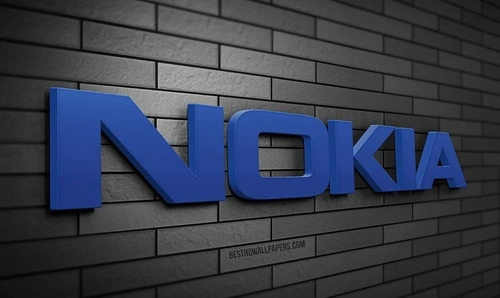Nokia Corporation, a Finnish multinational, is known for its long-standing history in telecommunications, information technology, and consumer electronics. Once the global leader in mobile phone manufacturing, Nokia has shifted its focus to the telecom infrastructure market, especially in 5G technology. As of 2024, Nokia continues to play a significant role in providing cutting-edge network equipment and solutions globally. However, the company faces intense competition and challenges in staying innovative and competitive in the fast-evolving tech landscape.

Current Overview of Nokia
Nokia has restructured itself over the past decade after losing its dominant position in the smartphone industry to Apple and Samsung. Today, it focuses heavily on network infrastructure, particularly in 5G and Internet of Things (IoT) technology. Nokia’s business includes subsidiaries like Nokia Networks, Nokia Technologies, and Bell Labs, which drive its research and development in advanced technology solutions. Its current revenue is predominantly derived from its network infrastructure business, including telecom equipment and services.
In 2024, Nokia operates in over 100 countries with a workforce of more than 90,000 employees. Despite losing a significant chunk of its consumer electronics market, Nokia has managed to maintain relevance by pioneering in telecom infrastructure, where it competes with companies like Ericsson, Huawei, and Samsung. The company’s recent ventures also include expanding into cloud computing and licensing its vast portfolio of patents
Future Plans
Nokia’s future growth strategy revolves around expanding its 5G market share. The company is investing heavily in 5G network deployment, enhancing its portfolio to include more efficient and energy-saving technologies. Nokia has also set its sights on cloud computing, IoT, and artificial intelligence (AI) integration, aiming to diversify its revenue streams beyond telecom infrastructure. Moreover, Nokia’s recent partnerships with companies like Intel aim to enhance 5G energy efficiency, which aligns with its goal to offer sustainable technological solutions.
Nokia SWOT Analysis
Strengths
1. Strong Brand Legacy: Nokia has over 150 years of experience and a long-standing reputation in the telecom industry. Its brand is associated with reliability and durability.
2. Expertise in 5G Technology: Nokia is one of the leaders in 5G network infrastructure. Its vast experience in telecommunications positions it strongly in the global 5G race.
3. Diverse Product Portfolio: In addition to its telecom services, Nokia has diversified into other sectors such as cloud computing, IoT, and patent licensing.
4. Global Presence: With operations in more than 100 countries, Nokia has a broad international reach, which provides a competitive edge in emerging markets.
Weaknesses
1. Late Entry into the Smartphone Market: Nokia was slow to adapt to the growing demand for smartphones, which caused it to lose a significant market share to competitors like Apple and Samsung.
2. Heavy Reliance on Telecom Infrastructure: While Nokia’s network infrastructure business is robust, its reliance on this sector makes it vulnerable to changes in market demand or technological advancements
3. Weak After-Sales Service: Nokia has been criticized for its underwhelming after-sales support, particularly in comparison to its competitors in the consumer electronics space.
4. Limited Innovation in Smartphones: Nokia’s smartphone designs have often lagged behind competitors in terms of user interface and performance, further hindering its recovery in the consumer electronics market.
Opportunities
1. Growth in 5G and IoT: The global demand for 5G infrastructure presents a massive growth opportunity for Nokia. By leading innovations in 5G, Nokia can regain its market leadership in telecom equipment.
2. Expansion into Cloud Computing: As the cloud computing industry continues to grow, Nokia is well-positioned to capitalize on this trend through partnerships and technological development.
3. Patent Licensing: Nokia’s large portfolio of patents provides a consistent revenue stream through licensing, allowing it to monetize intellectual property across industries.
4. Strategic Partnerships: Collaborations with companies like Intel and Microsoft can help Nokia innovate and scale its services, particularly in 5G and cloud solutions.
Threats
1. Intense Competition: Nokia faces fierce competition from major players like Huawei, Ericsson, and Samsung in the telecom sector, particularly in the 5G market.
2. Rapid Technological Changes: The fast pace of technological innovation in the telecom industry requires constant adaptation. Failing to keep up could lead to further loss of market share.
3. Cybersecurity Risks: As a major player in telecom and network infrastructure, Nokia is vulnerable to cybersecurity threats, which could damage its reputation and lead to financial losses.
4. Price Wars in Telecom Equipment: Intense price competition, especially from Chinese manufacturers, puts pressure on Nokia’s margins, which could hurt profitability.
Conclusion
Nokia, a company that once led the global mobile phone market, has successfully transitioned to become a leading player in telecom infrastructure, particularly in 5G. Despite setbacks in the smartphone market, Nokia’s strong legacy, technological expertise, and strategic focus on 5G and IoT offer a promising path forward. However, it must address challenges such as fierce competition, reliance on a single revenue stream, and cybersecurity threats to sustain growth. By capitalizing on emerging opportunities in 5G, cloud computing, and strategic partnerships, Nokia can regain its competitive edge and ensure long-term success in 2024 and beyond.